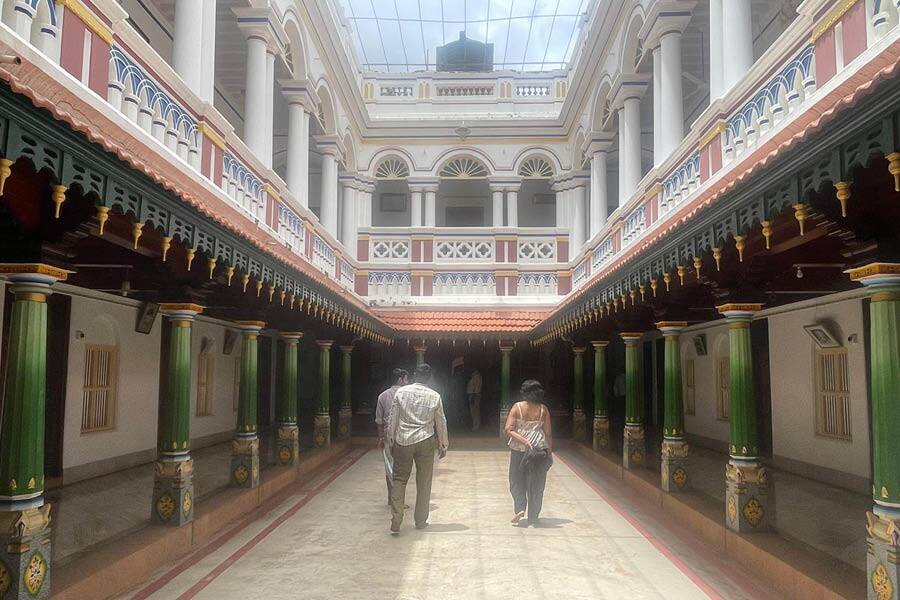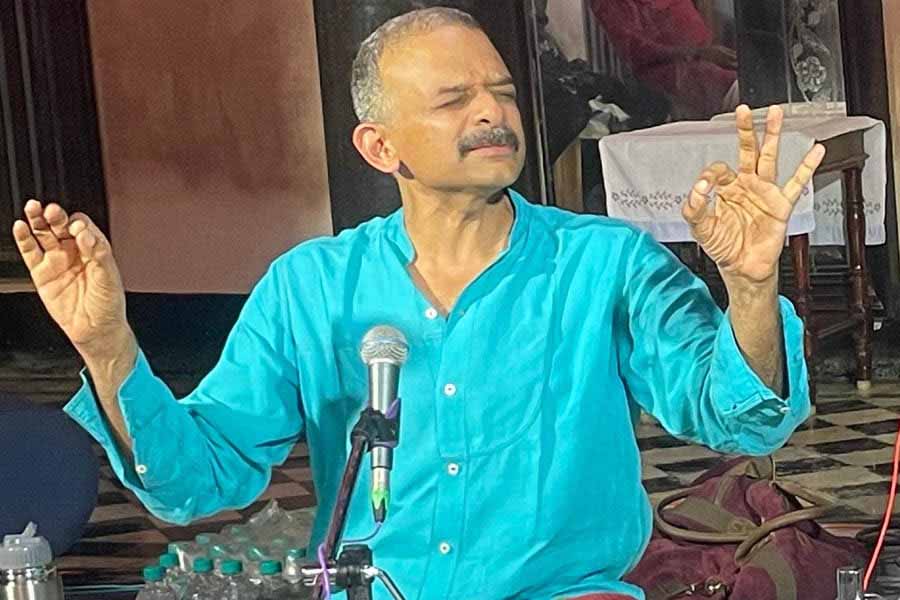Here are some of the remarkable things about the four-day Chettinad Heritage and Cultural Festival, whose 3rd edition ended recently: the diverse programme, tip-top speakers, exceptional performers, daily banquets, outings to see ancient temples and thriving crafts.
But, above all, it was the generosity of the Chettiar families, who opened their magnificent mansions to be the stage sets and who hosted in person. The festival is the brainchild of Meenakshi Meyyappan, a youthful 90-year-old known fondly as Aachi, which needs explaining. Aachi is the name for women of the area’s Nagarathar community (meaning townsfolk, or the sophisticated) while the men, known for their trading and business acumen, are called Chettiars. Today, the umbrella word Chettiar is often used, which can be confusing.
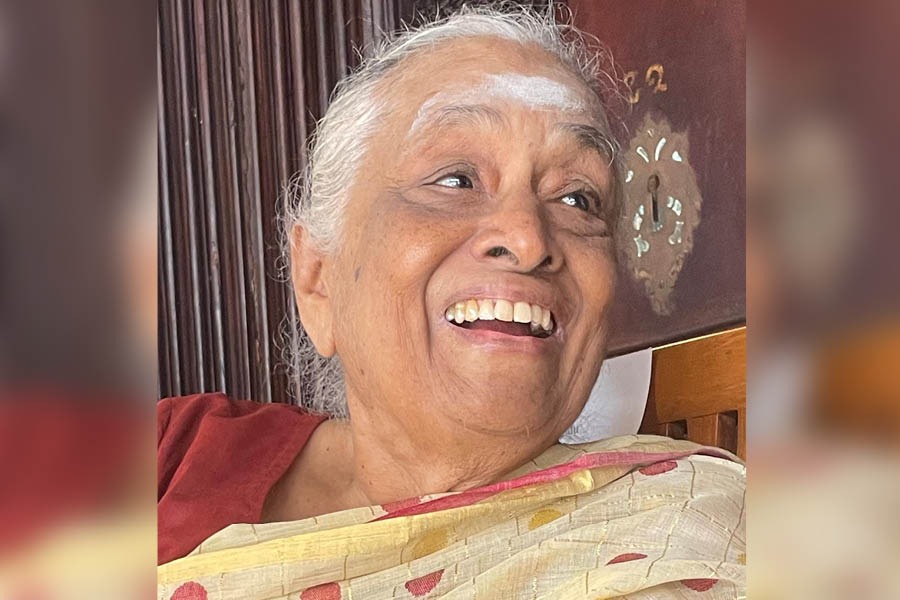
The festival is the brainchild of Meenakshi Meyyappan Louise Nicholson
Rising under medieval rulers, the Chettiars founded 96 villages in a scrubby rural area deep in southern Tamil Nadu, but well-placed for both prosperous royal cities and the coast with its south-Asia maritime trading opportunities. Boom times came in the late 18th century and lasted for more than a century, thanks in part to European trading, which offered new and stable opportunities for their skills. For instance, Chettiars dominated Rangoon’s economy and shipped home the Burma teak used to build their multi-courtyard mansions.
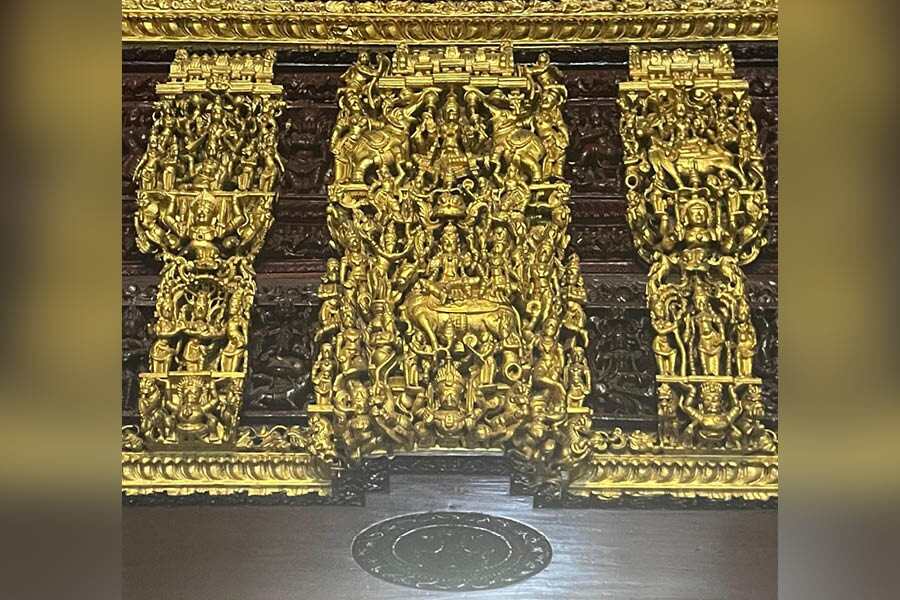
An extravagant gilded teak ornamentation on a Chettiar mansion doorway Louise Nicholson
These were the settings for their distinct rituals, renowned hospitality and the creation of an innovative cuisine. They were also bases for community commitment in arts patronage, temple restoration and education. More recently, despite many families deserting their mansions, and many more antiques dealers ripping off their intricate teak carvings and helping themselves to household goods, a good number survive intact. Each has a slightly mysterious aura — black-and-white photos of smartly-dressed past owners beside fancy cars still hang on walls, whole rooms that served as safes have huge locks in place, and most houses are known only by the initials of the head-of-house Chettiar. But with the festival, they are once again alive with full-on Chettiar hospitality of a level rare anywhere in the world today. Experienced by just 150 invited guests, each of us was bowled over.
The remarkable Meenakshi left Chennai in 1997 to return to her ancestral home in Karaikudi village. Here, she has committed herself ‘to everything Chettinad, the entire gamut of Chettinad cuisine, rituals and celebrations, family relationships, the architecture and interiors, temples, saris and textiles, jewellery, and anything that is Chettinad’. For her cookbook, The Bangala Table, she gathered near-forgotten family recipes that are now prepared in homes across the world. And for this 3rd edition of her festival — run by the Chettinad Heritage and Cultural Trust she set up — the welcome pack included an envelope with the seven banquet menus we would experience, each with more than 20 dishes. Most were unfamiliar even to keen foodies, but who could resist tasting green apple thayir pachadi, ladies’ fingers more kozhambu or vallai paniyaram? Even if you did not know quite what it might entail, it was bound to be delicious. And it always was.
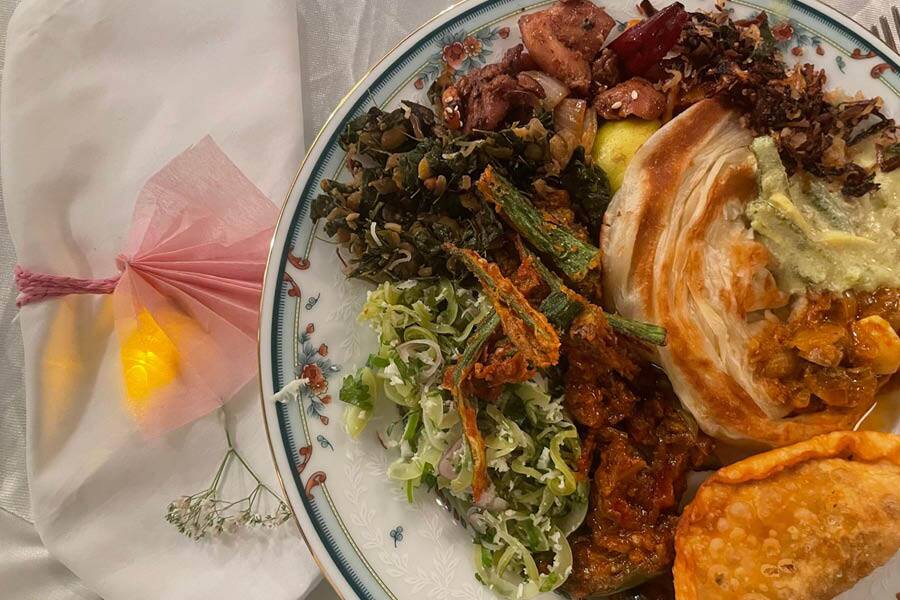
One of the many exquisite meals Louise Nicholson
The festival kicked off with TM Krishna’s vocal concert of old and new songs that pushed Carnatic music into new spheres. It was held in Meenakshi’s home, followed by her welcome banquet at The Bangala — a 1910 bungalow that was later the local club until Meenakshi transformed it into the area’s first quality hotel, opened in 1999. The evening set the festival’s tone and its thought-provoking theme: celebrating the classical while giving it new vigour.

TM Krishna in full flow Louise Nicholson
The schedule was ingenious. Each section took place in one village. A fleet of vans zipped guests here and there, teams of locals ensured no one missed anything, not even those who got so engrossed in what they were experiencing that they were not back on their van in time… including me, several times. The weather may have been unseasonally hot and humid, but we scooped up every event with sweaty fascination.
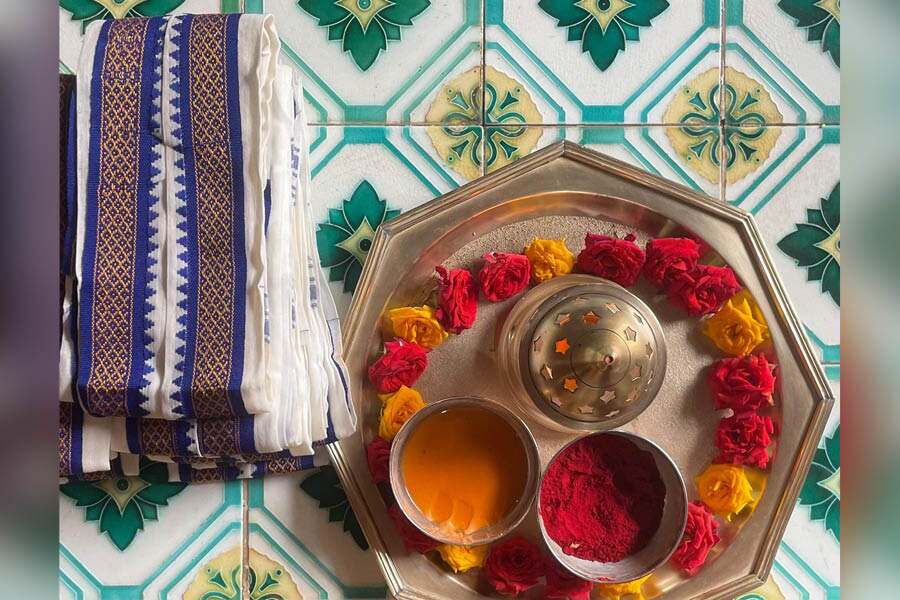
A traditional welcome at every Chettiar home Louise Nicholson
For instance, for our morning at Athangudi, we visited two great mansions — AR.RM House and Letchumi Vilas, and saw the soft-paste Chettinad mud tiles being made (and mostly resisted ordering some). Next, we moved to Kanadukathan village, to Visalam, a mansion-turned-hotel run by the eco-pioneering CGH group. Here, V Nagarajan, a 3rd generation traditional Tanjore artist, displayed his paintings. “I never veer from the fundamentals of the craft tradition enshrined in … the Shipla Sastra.” he says, but within this, he has innovated 3-D paintings — and foresaken Thanjavur to set up his studio in Chettinad’s Kottaiyur village.
After a cooling jaggery, ginger and lime drink ladled from an earthenware pot, we listened to 9th-generation Bharatanatyam dancer Aniruddha Knight talking about his approach to dance. As with TM Krishna, he learnt the rigorous classical tradition, but believes it is essential to take that and “make it your own, a cathartic process of change. Change is the catalyst for preserving dance. No art can survive without change.” He dances extemporarily, “I hear, I proceed to dance. Nothing is planned.” We were filled with anticipation for his later performance, but meanwhile crossed the street to eat a banquet thali lunch at S.A. House and enjoy some retail therapy at the bazaar offering local saris, local craft, delicate jewellery designed by Meenu Subbiah, and more.
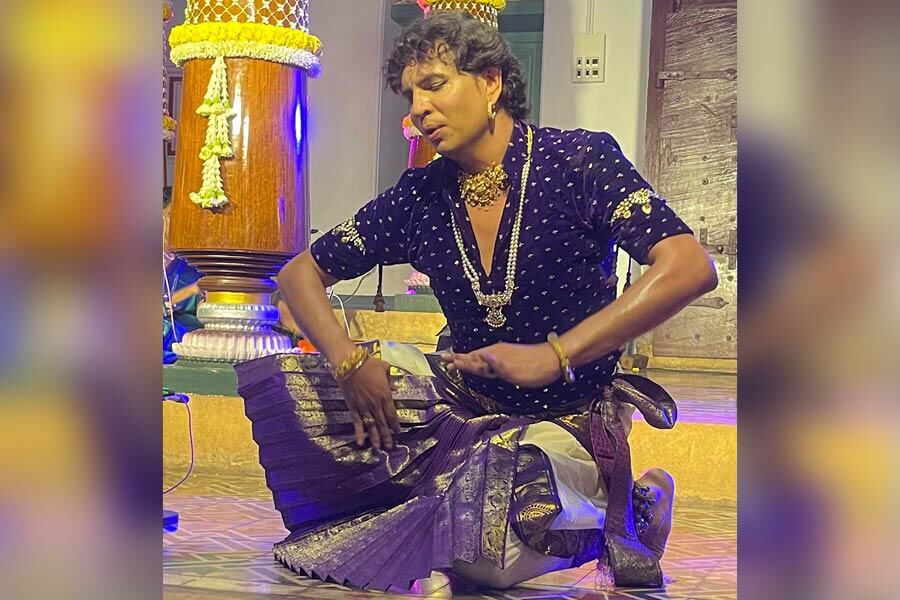
Bharatanatyam dancer Aniruddha Knight extemporises: ‘I hear, I proceed to dance’ Louise Nicholson
The day was not done. A brief respite for a shower and dressing up, and off for an evening at P.M.A. House in Kottaiyur. In the first courtyard, freshly brewed south Indian coffee and chai with warm house favourite snacks ensured no one would go hungry. Then, settled in the great courtyard — those of us who grabbed spaces on the stone floor or veranda step kept coolest — Aniruddha danced, and danced, and danced, inspired by his troupe of singers and musicians, and taking inspiration from his celebrated grandmother, the great Balasaraswati. His contemporary dance of wailing anguish drove Bharatanatyam into a new space — it had the despair of Lear carrying Cordelia’s body. Then, of course, we moved to other rooms for another banquet.
And so it continued, disruptive, thought-provoking. Anirudh Kanisetti shared snippets from his upcoming book about the Cholas, where he reveals the influential part the non-specialist Corporation of Merchants played in the empire’s success — warriors would refer to merchants as ‘our great men’ (to themselves at ‘heroes of the lands’). When we dropped in to watch an elderly weaver, unprompted he started to sing local folk songs as he wove — a magic moment. Dr Pradeep Chakravarthy took us for a deep dive visit through two lesser-known ancient temples lurking beneath Thirumayam Fort, each full of early inscriptions and sculptures carved from the living rock, notably a monumental Shiva revealed in his lingam; on Tamil Nadu’s 3,90,615 temples rating list, we unanimously voted them into our top 100.

Louise Nicholson
KR Santhana Krishnan’s show of paintings inspired by south Indian doors was sold out quickly, not surprisingly as some now decorate the VIP lounge of Bangalore airport’s new terminal, and plenty are in the Kiran Shaw and other collections. Fashion designer Anavila presented her new collection of saris inspired by Chettinad and its Aachi women’s traditional styles. By making them of 100-count linen processed in a Kolkata pre-war factory and woven near Phulia, she has pushed on her quest to give today’s women a gossamer-fine sari with new personality yet retaining its luxury and elegance.

Louise Nicholson
On the final day, at lunch in S. A. House in Kanadukathan village I found myself sat next to its owner. While staff neatly ladled out some twenty dishes onto our banana leaves, from vazhai thandu poricha koottu to quail pepper masala (recipe in Meenakshi’s book), he told me about growing up in the house, casually remarking that his grandfather was the first Chettiar to buy an aeroplane. I wondered if he used to eat as well as we had over the past four days.
